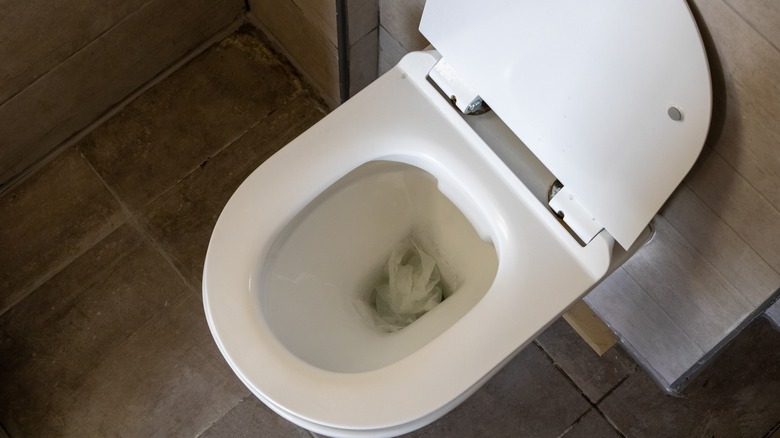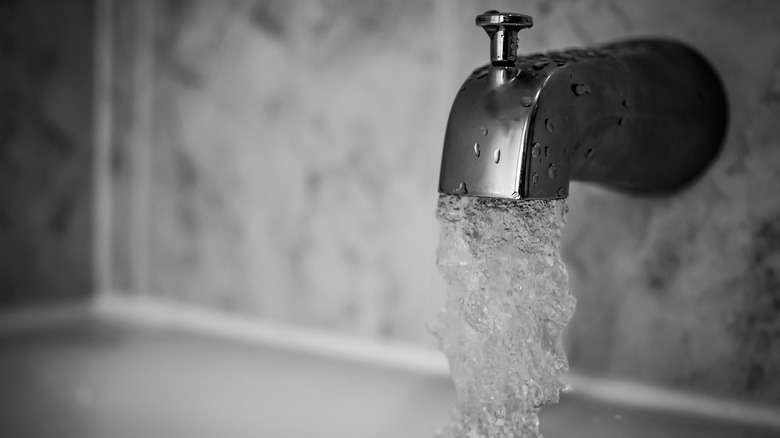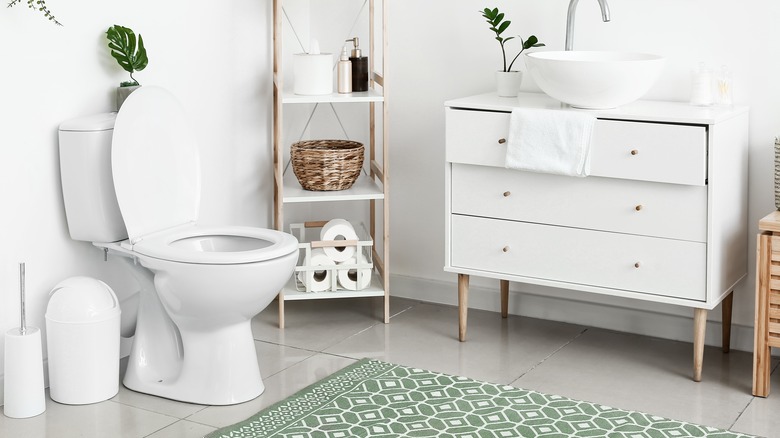The Common Hack For Clogs That You Should Never Use On Your Toilet
Toilet blockages always catch you off guard, and most people know how desperate that situation can become. So in a panicked state, you may quickly turn to the web for helpful DIY hacks. With the explosion of social media apps like Tik Tok, you'll find all kinds of recommendations to help you unclog your toilet — some more experimental than proven. After watching a few videos, you might even rush to the kitchen to fetch a pot of boiling water to cure your clogged toilet. However, attempting to fix the issue this way can create an even more significant bathroom nightmare.
Think of your toilet as a system with a robust exterior and a relatively delicate interior. Unfortunately, while boiling water might help address a clog in a toilet's interior, it can also crack or damage the porcelain or melt vital PVC piping. And while fixing a chipped toilet bowl is pretty straightforward, this type of damage might result in a trip to the home improvement store that will leave a serious dent in your wallet.
How boiling water damages your toilet
Water has a boiling point of around 212 degrees Fahrenheit. Most of your toilet's exterior, including the bowl, is porcelain, ceramic, or vitreous china. While these materials have very high melting points, repeated boiling water usage can form minute cracks due to sudden heating and rapid cooling. With time, these tiny fractures may develop into noticeable crevices.
To make matters worse, some piping (such as the closet bend and the wax ring at the toilet's base) is temperature-sensitive. Pouring boiling water can interfere with the strength of these delicate parts, worsening the damage. Since the melting point of PVC is approximately 185 degrees Fahrenheit, boiling water may diminish the size of the pipe, further enhancing the blockage. Instead of boiling water, use a bucket full of hot water from your tub, pouring from around 3 feet high to give the clog an extra push. Add a generous amount of dish soap for additional lubrication, and you may find a solution for unclogging your toilet without damaging the piping.
Toilet care tips to prevent frequent clogs
A bit of tender loving care can go a long way in helping prevent frequent clogging. One of the best ways to lower the chances of a blockage is to perform annual checks. Calling a professional to check your toilet's health status can help detect faults early enough. Some issues you didn't even know about can then be fixed, saving you on costly replacements and inconveniences caused by blockages that come out of nowhere.
Using the right type and amount of toilet paper can also massively benefit your lavatory. When shopping for quality bathroom rolls, look for varieties that break down with ease. Such brands put less strain on your home's plumbing system, ensuring less frequent blockages. The amount of toilet paper used largely varies among individuals, although most people go through approximately a roll and a half every week. If you notice your weekly consumption is exceedingly high, dialing back a bit can lower the stress on your toilet and plumbing.


